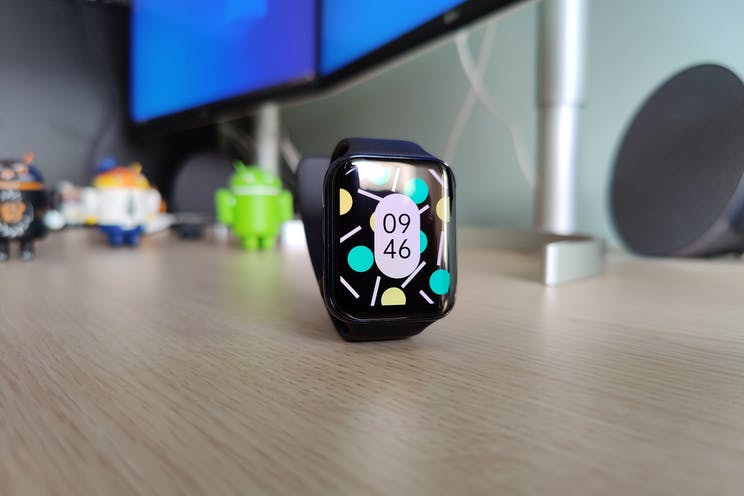Many watch manufacturers have stepped out of the Wear OS watch market in recent years. That has n’t stopped OPPO from launching its own Wear OS watch developments, starting with the OPPO Watch. Is it a bull’s eye, or does the Fossil competitor still have (some) work to do?
OPPO Watch
OPPO is not necessarily known for its sports-related wearables or smartwatches , but has launched the OPPO Band at an earlier stage. However, such a fitness tracker is difficult to compare with the smartwatch character of the OPPO Watch announced in 2020 . With the OPPO Band, the Chinese company competed with Xiaomi’s Mi Band series – while OPPO opens fire on Apple with its Watch.
At least that’s what you’d expect when you consider the OPPO Watch’s design. During the development process, OPPO has spent enough time looking at its competition. Whether that is a ‘deal breaker’ remains personal of course – the design of this Watch will of course be discussed later in the review . First of all, we still have to dive into the specifications of the smartwatch. At first it looks like an everyday Wear OS smartwatch, but nothing could be further from the truth.
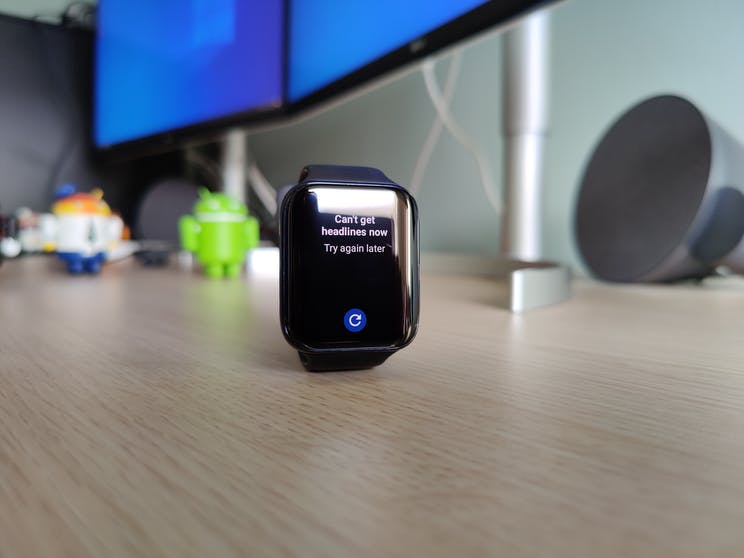
Under the hood will initially find the Qualcomm Snapdragon Wear 3100 chipset, with 1 GB RAM and 8 GB storage memory. So much for what you’d expect: the second chipset in the OPPO Watch, however, is what makes the smartwatch so special – the Apollo 3 Wireless. OPPO hopes to extend the battery life of the Wear OS smartwatch by means of an additional chipset. Whether that was successful? You can read that later in my review of the OPPO Watch.
Another choice that OPPO has made to differentiate the smartwatch is the software that you will find on the watch. While it is Wear OS – as we know it from Fossil watches – it is not just any variant of Wear OS. OPPO has received permission from Google to adjust the Wear OS software. With the adjustments in Wear OS, the watch fits better with the style of the software on OPPO phones, which include a ColorOS shell.
Whether the adjustments are enough to compete with Samsung’s Galaxy Watch 3 or other Wear OS smartwatches? You can read it in the pros and cons of OPPO’s Watch below. For this review, the OPPO Watch was used for three weeks, where it was also worn at night to test the sleep functions. During the tests, the Wear OS watch was connected to the OnePlus 8 Pro or the Motorola Moto G9 Plus, among others via the HeyTap app.
OPPO Watch – the pluses
1. OPPO’s Wear OS interface is stellar
Although Wear OS is now quite a few years old, the interface has remained almost the same. While that’s fine if it would have been a very intuitive environment, but that’s the big problem with Wear OS: it isn’t. OPPO is one of the first manufacturers to now have the opportunity to sprinkle its own ColorOS sauce on Wear OS. That is, I can conclude after weeks of walking around with the smartwatch, a successful step. A step that hopefully more Wear OS manufacturers will take.
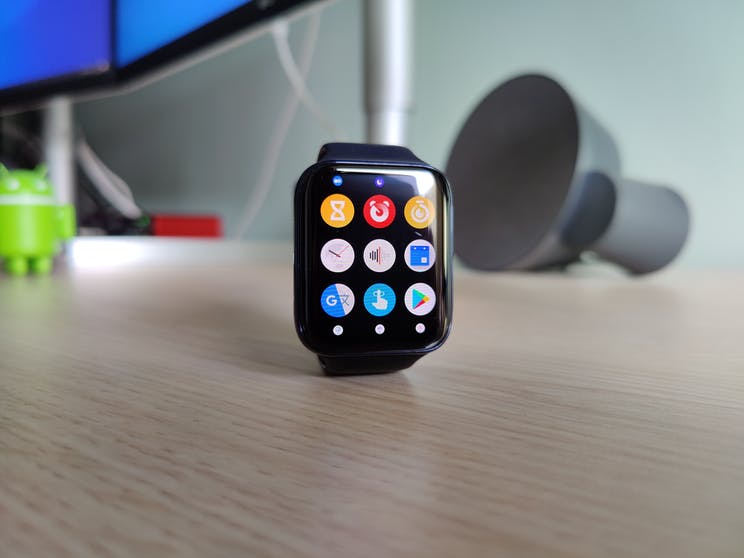
One of the improvements that OPPO has made can be found in the ‘app drawer’ of the Watch. Rather than an endless list of apps individually displayed with the app icon and name, the Watch gives you more of the app drawer feel of an Android phone. Icons of apps have been placed in a clear list view, so you don’t have to scroll as long to get to the right app. This principle is also made possible by the round screen on this smartwatch: it would be more difficult to display such an app drawer on round watches.
A second improvement in Wear OS can be found in the quick settings of the OPPO Watch – regular Wear OS smartwatches always show relatively small quick setting icons. Fortunately, OPPO has managed to increase this slightly with the Watch, making it easier to tap them. Furthermore, compared to other Wear OS watches, more quick settings are present in this panel.
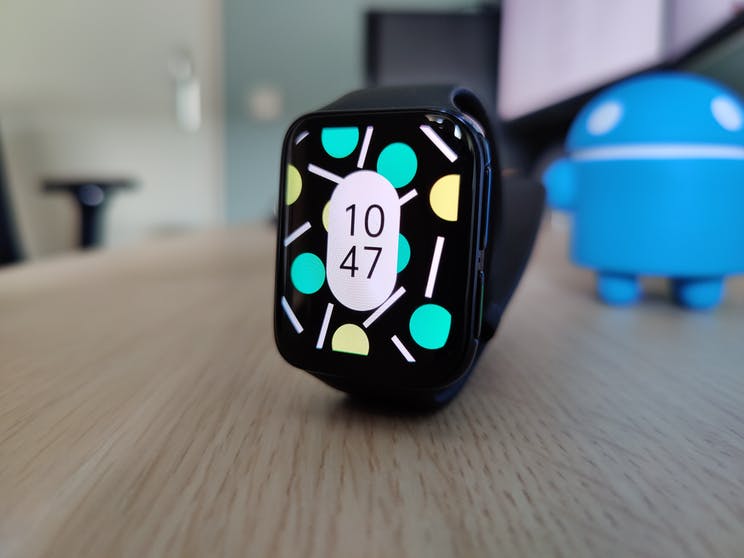
What makes the interface so refreshing is the convenience of adding extra tabs to the right side of the home screen. Press and hold a panel and you will be given the option to add an extra window to the list, or you can delete the selected panel. A screen that is set from the factory for the ‘daily activity’ and shows how far you are sticking to the set daily goals. In conclusion, you can say that OPPO has not only provided Wear OS with a ColorOS flavor, but Wear OS has also gotten better.
2. Speed all around on the OPPO Watch
What OPPO has also worked out well is the optimization of the software; for me, the Watch is the fastest Wear OS smartwatch I’ve ever tried. With 1 GB of RAM, this smartwatch flies through the available apps and the operating system. In the past, you sometimes had that smartwatches with Wear OS falter, but that has certainly been solved for the OPPO Watch. The watch is obviously not as fast as your phone – after all, the Snapdragon Wear 3100 is a bit older and also more efficient to operate in a smartwatch.
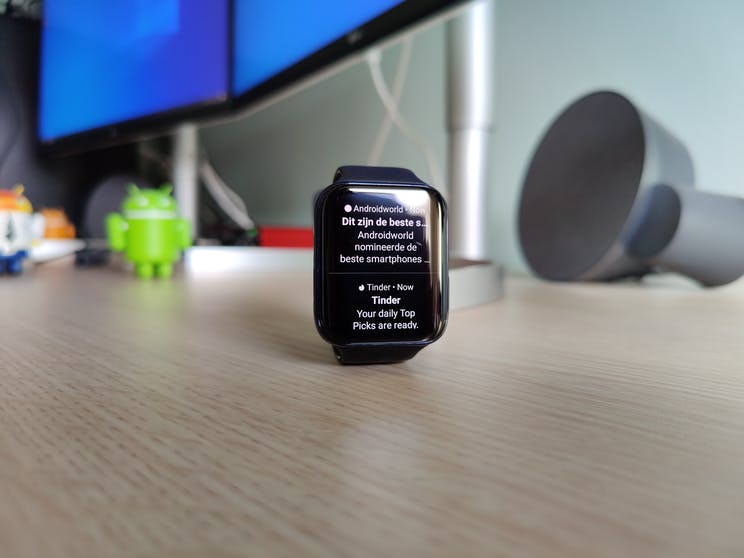
Opening apps can sometimes take a while and installing apps also takes a while, but that actually applies to all smartwatches and did not cause any annoyances with daily use. Also when it comes to notifications, the OPPO Watch is a speed monster – often I got notifications even earlier on the smartwatch, than on my phone. Perhaps it says something about the phone, but it also gives a feeling that you can trust the OPPO Watch to deliver notifications on time.
Transferring files is not very fast on the OPPO Watch, but in practice it is sufficient for downloading files. Therefore, the OPPO Watch normally performs this via the Bluetooth connection with your phone. Only when your phone is out of range will the Watch work via the Wi-Fi network that you previously set up. Incidentally, there is no ‘LTE variant’ of OPPO’s smartwatch.
3. Screen rounded on both sides
You may have already owned a smartwatch: there is a good chance that this smartwatch, unless it was an Apple Watch, had a round screen. With the OPPO Watch, the round character of most smartwatches has been said goodbye, and a rectangular screen has been placed. Before my review period with the smartwatch started, I did not know what to think about OPPO’s choice. In retrospect, at the time of the review, I fell for the benefits that this concept offers.
Rectangular screens can store much more data, while the watch does not have a larger footprint on your wrist compared to most round watches. Especially with apps like Maps, the rectangular screen is extremely beneficial. At the same time, it makes it easier to type on the smartwatch if you don’t want to use the voice input on the OPPO Watch. What should not be forgotten is that you also have more space to read notifications. You may have to get used to it, but it has its advantages.
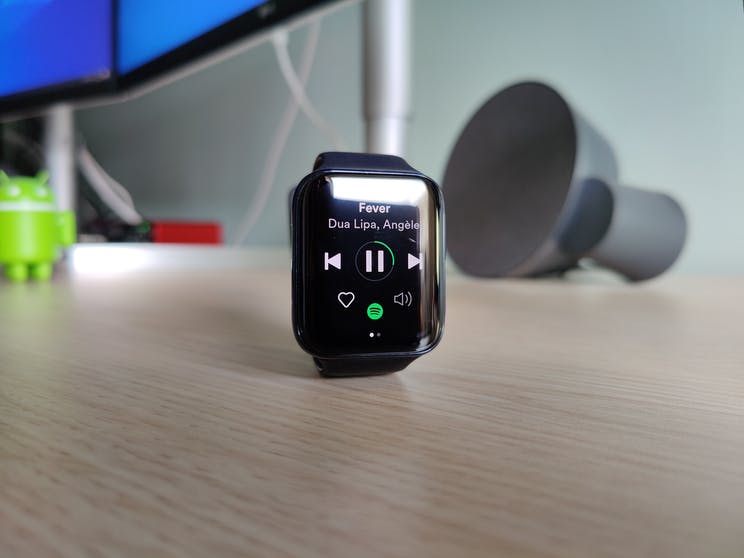
The screen of the OPPO Watch (46mm) is more than adequate and can be nice and clear, so that you can also use the screen outdoors without any problems. Colors of the screen look neat: for some the shades may be a bit too warm, but overall I am very satisfied. Please note that the smartwatch can also emit a considerable amount of light in the evening if you have it on in bed.
What I can’t forget about the OPPO Watch, and that actually makes for a better experience, is the rounding of both sides of the screen. The difference may seem small with a flat or slightly curved screen, but the rounding really makes it a lot easier to swipe in from the left or right. Furthermore, the borderless (there is no plastic edge around the screen) screen gives a more pleasant feeling when swiping than on, for example, my Samsung Galaxy Watch (OG).
4. Battery life that ‘satisfies’
Watches with Wear OS have been undermined in recent years for their battery life; in most cases they could just last one day, over time this meant that people even had to recharge their smartwatch on the day itself – after all, batteries do not remain of the same quality forever. How about the OPPO Watch (46mm)?
In practice, I could easily wear the watch all day on most days and get a few more hours out of it. That meant that I usually took it out of the charger at 100 percent, and then could run it until around 3:00 PM the next day. How long the battery lasts, as with any device, depends on how you use it. On days when I used the OPPO Watch for navigation and exercise, the battery did not last as long, and I usually put it on the charger at night – the Watch would then not have enough battery to last all night.
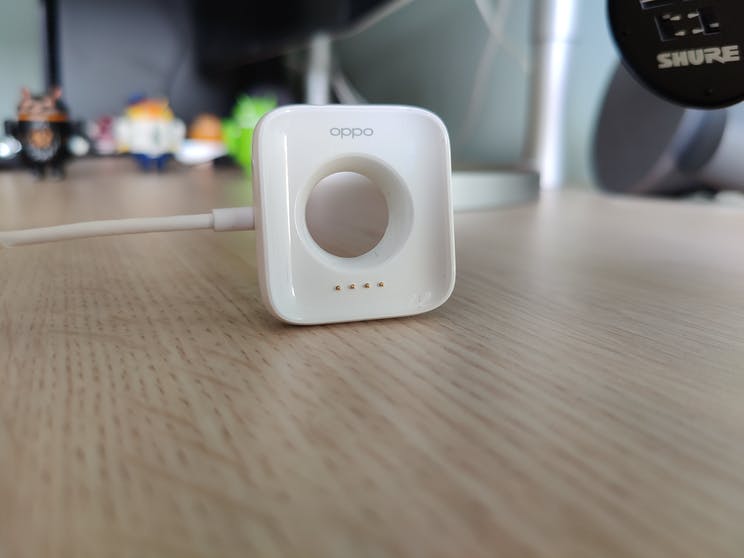
Busy days with many notifications also had some effect on the battery life, but that was not too bad – often I could still use the smartwatch with ease to keep track of my sleep. The smartwatch sometimes had to be on the charger one or two hours earlier. It should be clear that with the OPPO Watch you do not buy a smartwatch that will last much more than one to one and a half days. If you’re used to a Galaxy Watch from Samsung, the OPPO Watch’s battery life could be a bit disappointing. This watch has a solution for that.
If the battery of the OPPO Watch is empty, you can put it on the charger for 15 minutes to increase the battery life to about 45 percent. It does take a lot longer to fully charge the smartwatch. Our tests showed this to take about 80 minutes from 0 percent. The only drawback of OPPO’s charging technique is that it is based on its own VOOC charging technique, which works with so-called POGO pins. Wireless charging is therefore not possible with this smartwatch.
At the same time, I have to say that I am impressed with the quality of the charger that OPPO provides with the smartwatch. For charging, you place the smartwatch in its holder and the OPPO Watch is securely held there by means of magnets. An empty smartwatch in the morning because it was shifted from the charger, is therefore not in it. It is important to clean the pins from time to time; they sit in a slight indentation and can collect dirt so that it no longer charges.
5. Great all-round sports smartwatch
OPPO’s smartwatch is not the first smartwatch you might choose for sports and I have not tested it that way: this watch is primarily intended to be worn during everyday activities. You will notice this on the one hand in the strap – which I will come back to later – and OPPO’s commitment to sports functionalities. They are certainly present, but not as comprehensive as on a pricey Garmin or Polar sports watch.
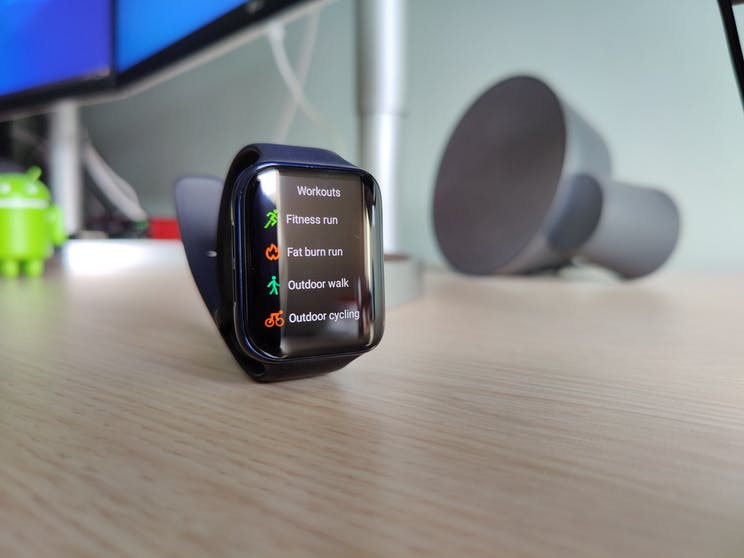
In the sports application supplied by OPPO on the Watch, you will find five sports modes – starting with a ‘Fitness run’. In this mode you can choose between an indoor and outdoor activity. There are no measurement differences between the two modes other than the fact that the outdoor activity uses GPS. Before you start, you can set a goal based on your heart rate, calorie consumption or your activity time. During exercise you get a handy overview of the status of your activity, so you can see whether you are still warming up or whether you are already in the next phase of your running session and can provide a little more input.
In the ‘fat burn run’ this function is further expanded by providing spoken feedback in addition to a visual interpretation. That way, the smartwatch can further support you to stay in the specific heart rate zone in which one can usually burn a lot of fat. In the outdoor walk and cycling modes, the spoken feedback is omitted and the focus is again on the goals you set for your activity, such as the distance to be covered or the duration of the sports activity. In these modes, as well as the aforementioned modes, the smartwatch uses GPS and the heart rate sensor on the Watch.
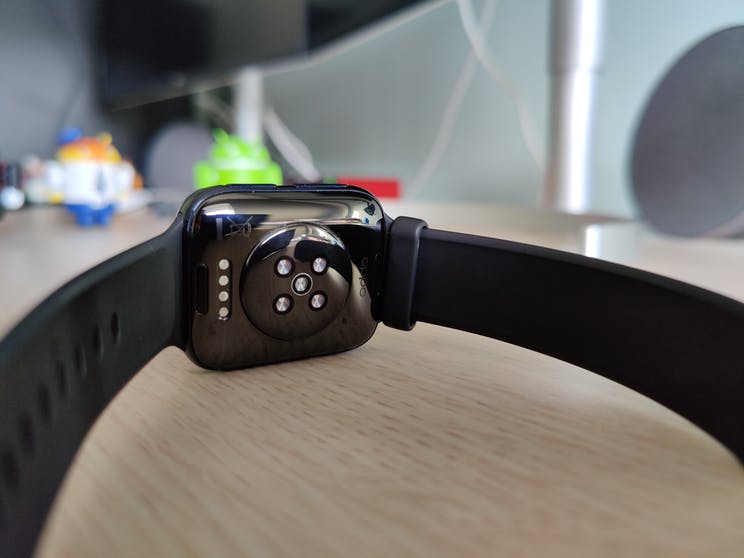
Once you go swimming, the OPPO Watch will no longer use the built-in GPS connection. While the sport mode loses a feature at that point, swimmers are getting a pair of extra features to make up for it. In swimming mode you can set how long the pool is and block the ‘touch of the screen with your fingers’. In this way you can prevent the sports activity from being stopped by contact with the water or parts of your body.
I am very satisfied with the sports options that are standard on the Watch. While you can’t call the OPPO Watch the most comprehensive Wear OS sports watch, it certainly does the job. If you sometimes want to do some sports and want to keep wearing the watch at other times, you can’t actually make a mistake with a smartwatch like the OPPO Watch. I actually have few complaints about the accuracy of the GPS chip, the heart rate sensor and the pedometer. Compared to the Galaxy Watch (OG), the difference in steps and heart rate was usually minimal.
OPPO Watch – the negatives
1. Extra HeyTap registration
When setting up the OPPO Watch, you obviously need the Wear OS app, as befits the Wear OS platform. There is actually little new to tell on that point, you can continue to operate the smartwatch in that way. What is striking, however, is that the smartwatch will require a second app as soon as you use the battery saver mode. At that point you no longer use Wear OS, but a secondary platform: that platform requires the so-called HeyTap app.
What makes it so strange is that OPPO doesn’t directly refer to the HeyTap app anywhere, other than getting the HeyTap app suggestion as a Wear OS notification. The disadvantage of the extra app is that you have to leave a considerable amount of personal data with an app that you normally do not need for a Wear OS smartwatch. If you don’t mind leaving the data with OPPO, you do get access to a number of exclusive functions and data points – functions that are not visible in the Wear OS app.
OPPO’s HeyTap dashboard for tracking sports activities, among other things
The first tab that you come across in the HeyTap app contains a number of health statistics: if you wear the watch while exercising, you can see your sleep rhythm, as well as your heart rate and the activities you have taken while wearing the OPPO Watch. You can also see the GPS data of your sports activities if you exercise with the smartwatch. I will come back to the sports options that the OPPO Watch offers later.
Even if you don’t use sports functions that much, you may still need to get started with the HeyTap app. If you want to be able to read how full your smartwatch is still in the battery saving mode of the OPPO Watch on your phone, or if you want to continue to receive notifications in this mode of the Watch, you have to pair the HeyTap app. Without the app, this data will not be synchronized.
2. Strange sleep tracking times
Almost all smartwatches nowadays offer the possibility to track your sleep, the OPPO Watch is also equipped for that: every evening between 20:00 and 10:00 the next morning, OPPO will track your sleep. Part of my testing of this smartwatch took place over the Christmas holidays – a time to sleep in. The disadvantage is that this watch stops measuring your sleep rhythm after 10:00. In some cases, I didn’t wake up until 11:00 am – oops – and this watch didn’t take that into account.
This is also inconvenient for people who work night shifts and sleep during the day, as they cannot collect data about their sleep rhythm with this watch. If you always sleep in the frameworks that OPPO has set, then the tracking is fine. It is unfortunate that OPPO does not separately mention REM sleep in its sleep statistics. OPPO names your sleep rhythm according to three categories: awake, light sleep and deep sleep. REM sleep is added to the ‘light sleep’ category on this watch.
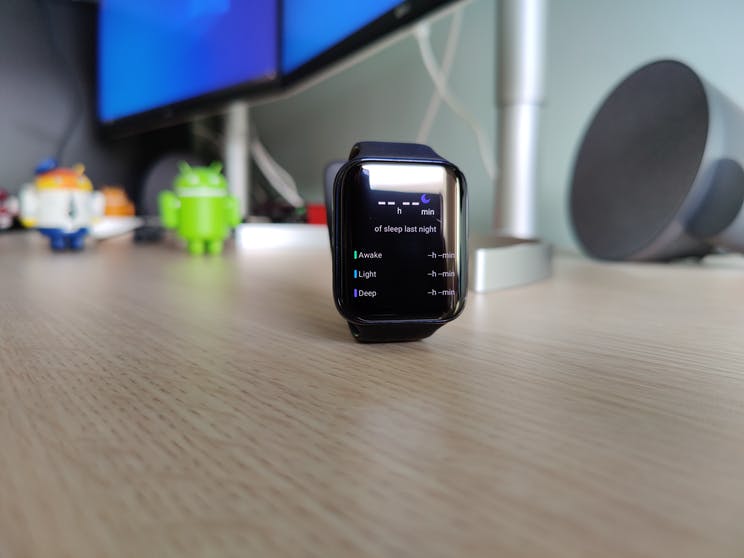
Whether the measured figures of the OPPO Watch are correct is difficult to say. In the morning I sometimes had the feeling that the OPPO Watch thought that I was still asleep for a long time, when in reality I had been on my phone for an hour. Finally, it is important to mention that OPPO does not provide an overview of your heart rate in the statistics of your night rhythm. Of course you can read these figures via the HeyTap app, among other things, but as far as I am concerned it would be nice if these data were shown directly with the sleep tracking.
3. OPPO has its own band system
For a number of years, watches have increasingly been fitted with the same type of straps so that it is easier to buy a set of new straps in the future. This specifically concerns how the straps are connected to the smartwatch. Many smartwatches use a sliding clasp, with such a strap you have to slide a pin to remove or put on the strap. For the OPPO Watch, the Chinese manufacturer has chosen a different – in practice perhaps easier to use – system for its watch straps.
For this system, click a button at the bottom of the smartwatch to disconnect the strap on one side of the watch. Although the system is easier to use, it does not allow all watch straps to fit on the Watch. If the supplied strap breaks, you will have to purchase a new strap from OPPO. By that time there might also be some other band makers who have offer for the OPPO Watch, but that remains more limited than is the case for most other smartwatches. If you thought to buy a metal strap for the OPPO Watch, you might be ‘disappointed’.
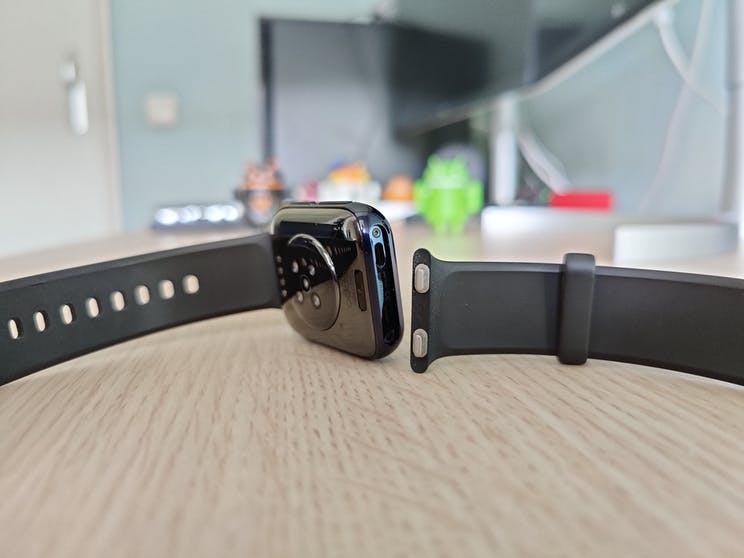
4. Outdated Wear 3100 chipset
Although the range of Wear OS smartwatches with the Snapdragon Wear 4100 is still limited, this will change quickly in 2021. A Wear OS competitor to the OPPO Watch, the Mobvoi TicWatch Pro 3, already contains such a new chipset and that offers the necessary advantages. To begin with, Qualcomm’s Wear 4100 chipset is much more economical and the processor is many times faster. Although the OPPO Watch actually feels nice and fast, it can be a bit faster, while that is also accompanied by a lower energy consumption.
Expect Snapdragon Wear 4100 smartwatches to hit the two-day milestone with ease when it comes to battery life. Of course, that depends on other components – such as the screen – that the smartwatch manufacturer uses. That puts the OPPO Watch (46mm) for a tough battle, especially if you take the suggested retail price of OPPO’s smartwatch with you: 350 euros. Currently, OPPO’s watch is also sold at that price.
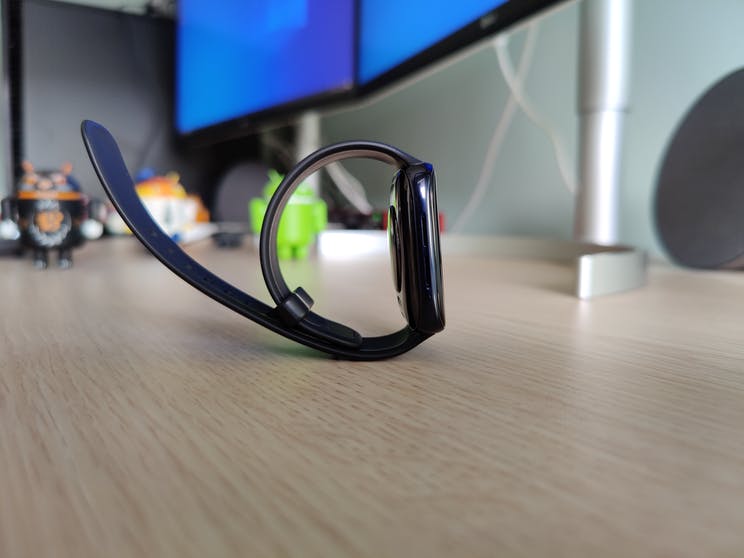
Compare that with the Mobvoi TicWatch Pro 3, which is sold at just under 300 euros, and you quickly see that the price of the OPPO Watch is difficult to defend. Certainly for the athletes among us, the TicWatch Pro 3 will be a better choice, as well as people who want to charge their smartwatch as little as possible. At the same time, you miss the nice software experience that OPPO has been able to build on its smartwatch. It is to be hoped that a – perhaps cheaper – version of the OPPO Watch will hit the market this year, this time with the new Snapdragon Wear 4100 chipset.
Whether it is the 1 GB RAM or the adjustments of OPPO I dare not say, but the smartwatch also feels nice and smooth. Both when loading apps like Google Maps and scrolling through the Wear OS interface. What is a downside is that OPPO has still used the Wear 3100 chipset from Qualcomm, instead of the newer Snapdragon Wear 4100 chipset. In practice, the latter chipset is a bit smoother, but above all more energy efficient.
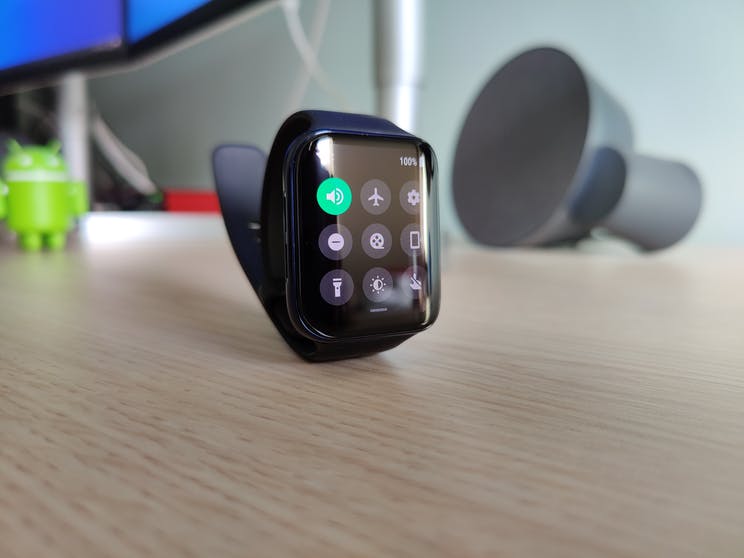
Not that the OPPO Watch is necessarily inefficient, but with just over one day the battery life is just slightly below its sports watch competitors and what would be desirable to make a smartwatch really nice for daily use. For example, if you now start exercising a lot or use a lot of apps, you will often want to put it on the charger after the first day. That in turn ensures that you cannot use it to measure your sleep rhythm, unless you put it on the – fast – charger in between.
To come back to sports briefly, although it is possible to use this watch for sports – the most important sports functions and hardware are present – this is nevertheless the watch that was primarily developed for everyday use. You will also notice this in the HeyTap app for the Watch, which you have to install separately, something that OPPO does not indicate during the installation. In the app you will find some sports data, but it is not very extensive. Of course you can install separate apps to make that possible, but in principle that is possible on any Wear OS smartwatch and does not make this Watch unique.
What makes the OPPO Watch unique is the rounded screen on the front of the watch. I never expected that the roundings would make such a big difference, but it turns out to be very nice – the screen is otherwise sufficient in its entirety and is sufficiently bright for use in direct sunlight. Another thing that makes the OPPO Watch unique is the strap system: that is different from most smartwatches and is easy to use, but at the same time makes it very difficult to purchase new straps.
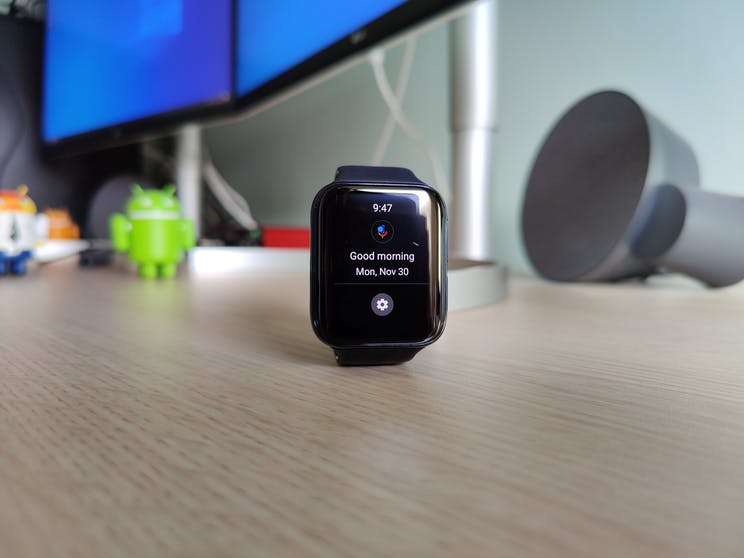
Bottom line, the watch has many advantages and disadvantages, but the main disadvantage remains the suggested retail price: with a price of 349 euros, it is very difficult to recommend the OPPO Watch, especially if you consider that for 299 euros you can buy the TicWatch Pro 3 from Mobvoi, the first watch with the Snapdragon Wear 4100. Perhaps the looks of the OPPO Watch will draw you over the line to buy this watch instead of the TicWatch Pro 3, and for that I can also only agree. If you buy this watch, you will at least buy one of the, if not the best, Wear OS smartwatch.
OPPO Watch – Conclusion
After walking around with the OPPO Watch (46mm) for several weeks, I dare to say that this is simply a very nice smartwatch, and actually more than that. This was the first time that a Wear OS watch convinced me of the power of the platform and the possibilities it offers. What has especially helped in this are the software adjustments implemented by OPPO; adjustments that would not look out of place for Wear OS. Among other things, by implementing the app drawer in such a way that it becomes a (finely manageable) list of apps.
